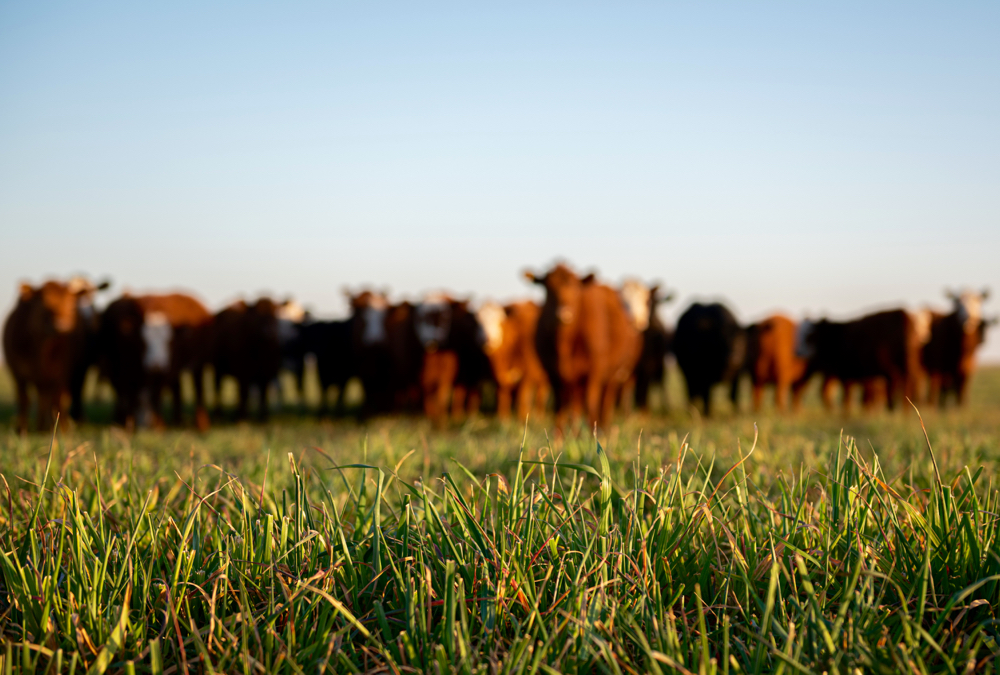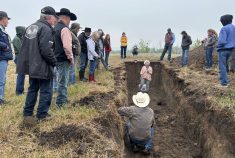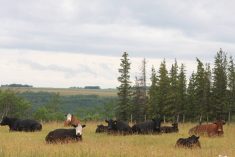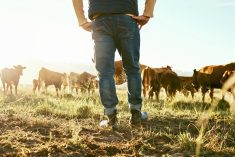We are facing a very real winter feed shortage in Western Canada due to the drought, and some people are making tough decisions around culling cattle. We’ve also been facing a lack of profitability, especially in the cow-calf sector, and I think that ranch-level economics are compounding what would already be a tough situation with this widespread drought.
Ranch profitability is rarely a headline-grabber, but it’s been a slow-burning problem for years. Running a profitable ranch is no easy task at any life stage, but it seems especially difficult for many younger producers to get into the business. It also ties into many other big, social issues. For example, if we want to preserve what little native prairie we have left in this country, we need to find a way to get more jingle in the jeans of the beef producers stewarding that land. Ranching families are important parts of our rural communities, too, not to mention all the pieces of the economy that rely on beef production in our country and beyond.
Read Also
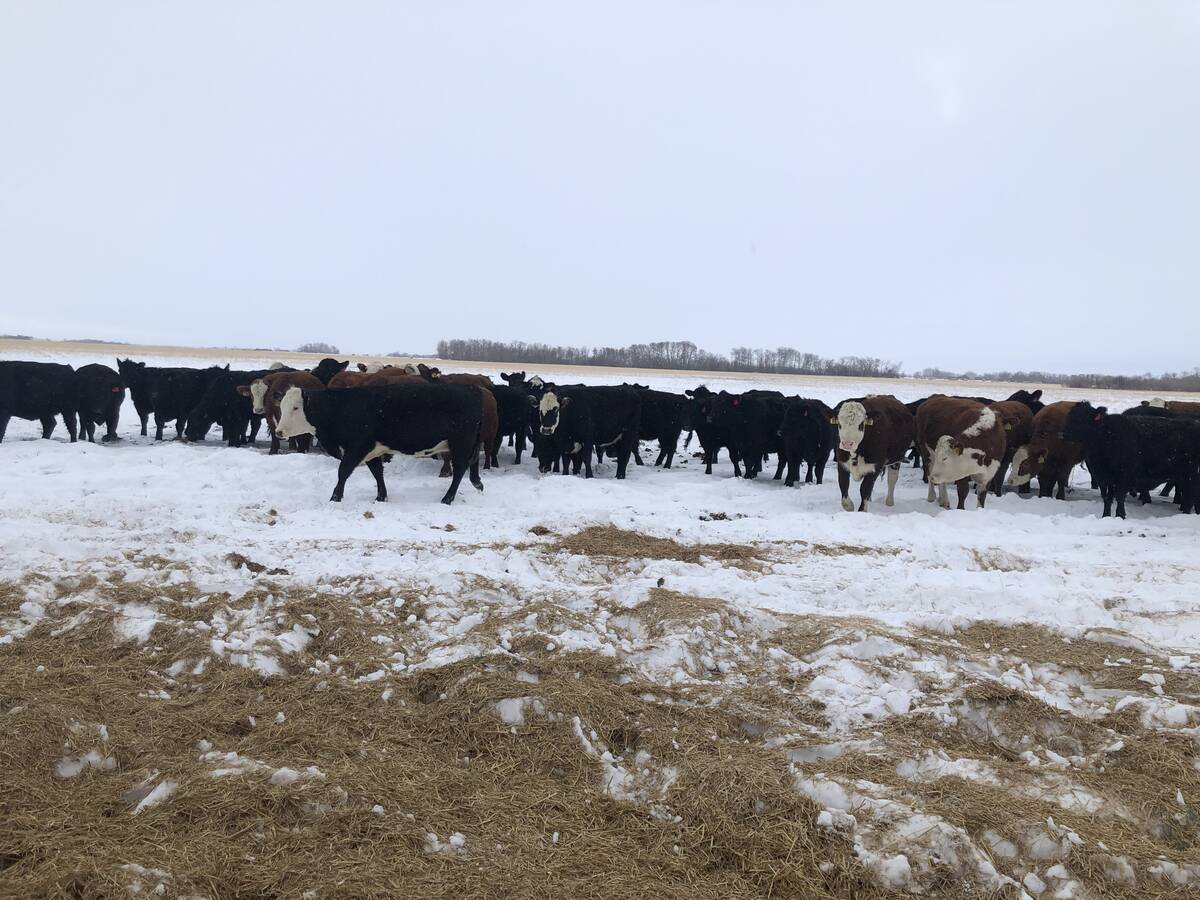
Picking the most efficient cows to rebuild your cow herd
A new cow ranking system to help beef farmers and ranchers pick the most efficient cows as they rebuild their herds.
So I was very pleased when Canfax released the results and analysis of its initial work building a Canadian Cow-Calf Cost of Production Network. Brenna Grant, manager of Canfax Research Services, talked about the network during the Canadian Beef Industry Conference, held the first week of September.
The Cost of Production Network’s purpose is to benchmark different production systems found across Canada, Grant said. So far there are 28 benchmark farms, of which 25 are cow-calf, and three dairy-beef. Sixteen are in the West and 12 in the East, so right now it’s over-sampled in the East. But the main goal this first year was to provide national coverage, from B.C. to Prince Edward Island, and they’ve achieved that, Grant said.
This is a “first step” in identifying typical production systems, but is “by no means exhaustive,” Grant said. Canfax is looking for more producers for the next stage in this research (more on that in a minute), but right now it’s about starting to inform conversations.
“When you think about cost of production, you would expect a normal distribution curve, with some production systems being lower cost than the provincial average, and others being higher cost.” That distribution curve would allow them to identify similar systems and possible improvements by comparing operations in a similar system.
“Remember, this is about seeing possibilities. What is possible for a cow-calf operation to achieve — not the average — but the range of possibilities under different production systems, and even with a similar production system.”
There’s a link directly to the Canadian Cow-Calf Cost of Production Network on Canfax’s home page. From there, producers can drill down to the results, which summarizes the benchmark farms, and includes links to a glossary and a fact sheet on options for calculating cost of production (there’s more than one way to do it, and the best option will depend partly on what you want to get out of the analysis, Grant said). Canfax’s website also contains an “Analysis” page that houses fact sheets on everything from cow depreciation to suggestions for young producers. The “Analysis” page also has a summary of the results so far, detailing findings from benchmarked farms such as weaning weights, ability to cover costs, profitability, winter feed systems, etc.
The following are just a few things from the summary that jumped out at me. Please interpret them as reasons to sharpen your pencil and do some thinking rather than prescriptions.
Canfax collected data on labour productivity, or hours per cow. Those numbers ranged widely, from 2.4 to 37.6 hours per cow. The average was 12.5 hours per cow. I wonder what accounted for some of those differences (herd size, production system, etc.).
The report also dived into cow weight and profitability. Six out of eight of the operations within the bottom third of cow weights were profitable. But so were five out of eight of the operations within the highest third of cow weights. There were other factors that helped determine profitability.
The producer with the lowest costs per cow and per pound weaned purchased 20 per cent of their feed. They also contracted custom work to reduce equipment costs and used a range of feed, such as hay, swaths and silage.
Right now the sample size is too small to create provincial averages, Grant said, but Canfax is looking for more producers for the next phase. They want to confirm existing production systems and expand the number of dairy-beef operations outside of the Maritime provinces, to Ontario and Alberta. In Manitoba, they’re looking for producers who use bale grazing, as well as producers who are either running startup operations or using community pastures. In Quebec, they’re looking for mixed operations that include cash crops, as well as cow-calf operations using a silage ration. In some provinces, they’ll be looking for larger herds.
Producers will receive a $500 honorarium for participating in two virtual focus groups, plus a summary of their farm’s production system and production indicators, plus baseline information about cow-calf enterprises. Individual results will remain anonymous.


